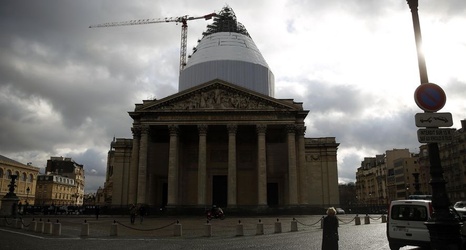A new study appears to have cracked the code on why ancient Roman architecture such as the Pantheon and certain still-functioning aqueducts are so durable: self-regenerating concrete.
Researchers at the Massachusetts Institute of Technology, Harvard University and in Italy and Switzerland found that the Romans used a process called “hot mixing,” which causes the concrete to recrystallize automatically when cracks start to form.
Hot mixing took place because lime clasts — white minerals that are roughly a millimeter in size and created by extreme heat — turn into calcium carbonate when they come into contact with water.
